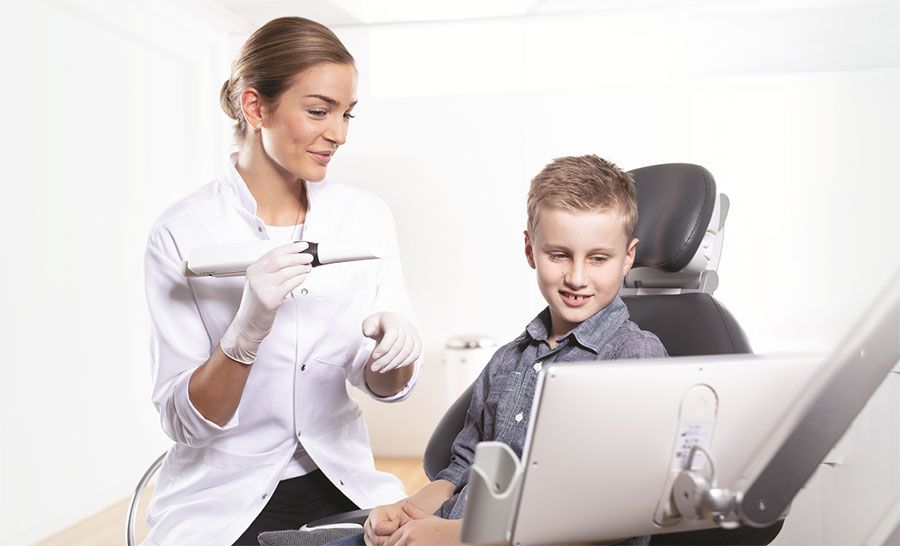Intraoral scanners recommended for patient communications
An interesting study published on January 17, 2024 finds that intraoral scanners improve the communication of dental findings with parents and their patient-children.
The study involved 60 children approximately 10 years old with their parents or guardians. 30 of the children were scanned with a 3Shape TRIOS 4 intraoral scanner and then informed of children’s dentition using the IO scans from TRIOS as a visual aid.
The other 30 were verbally told of the results of their examinations.
The study found a significant difference between the group that used an intraoral scanner and the other group in terms of understanding the oral situation.

In fact, only 57.2 ± 17.8% of the participants in the control group without the scanner were capable of answering questions correctly whereas the group that was supported by the TRIOS scans 85.5 ± 17.3% (mean ± standard deviation) answered correctly.
In particular, the control group (without the scans) had difficulties answering the questions about treatment needs and therapy correctly.
The clinical study concluded: “Within the limitations of this pilot RCT, IOS can clearly be recommended as a visual aid to improve the communication of dental findings with PGs (parents & guardians) in pediatric dentistry as it significantly increases comprehension, especially regarding treatment issues.”
In a recent article in Dental Product Shopper magazine, US-based dentist Dr. Glen Goldstein, said: “There’s a ‘wow’ factor to using the TRIOS. I constantly get asked, “What IS that?” and patients are always amazed by the technology.”
The clinical study: Improving the Communication of Dental Findings in Pediatric Dentistry by Using Intraoral Scans as a Visual Aid: A Randomized Clinical Trial Nelly Schulz-Weidner 1,*ORCID, Marina Gruber 2,Eva May Schraml 3,Bernd Wöstmann 2,Norbert Krämer 1 and Maximiliane Amelie Schlenz 2,*ORCID